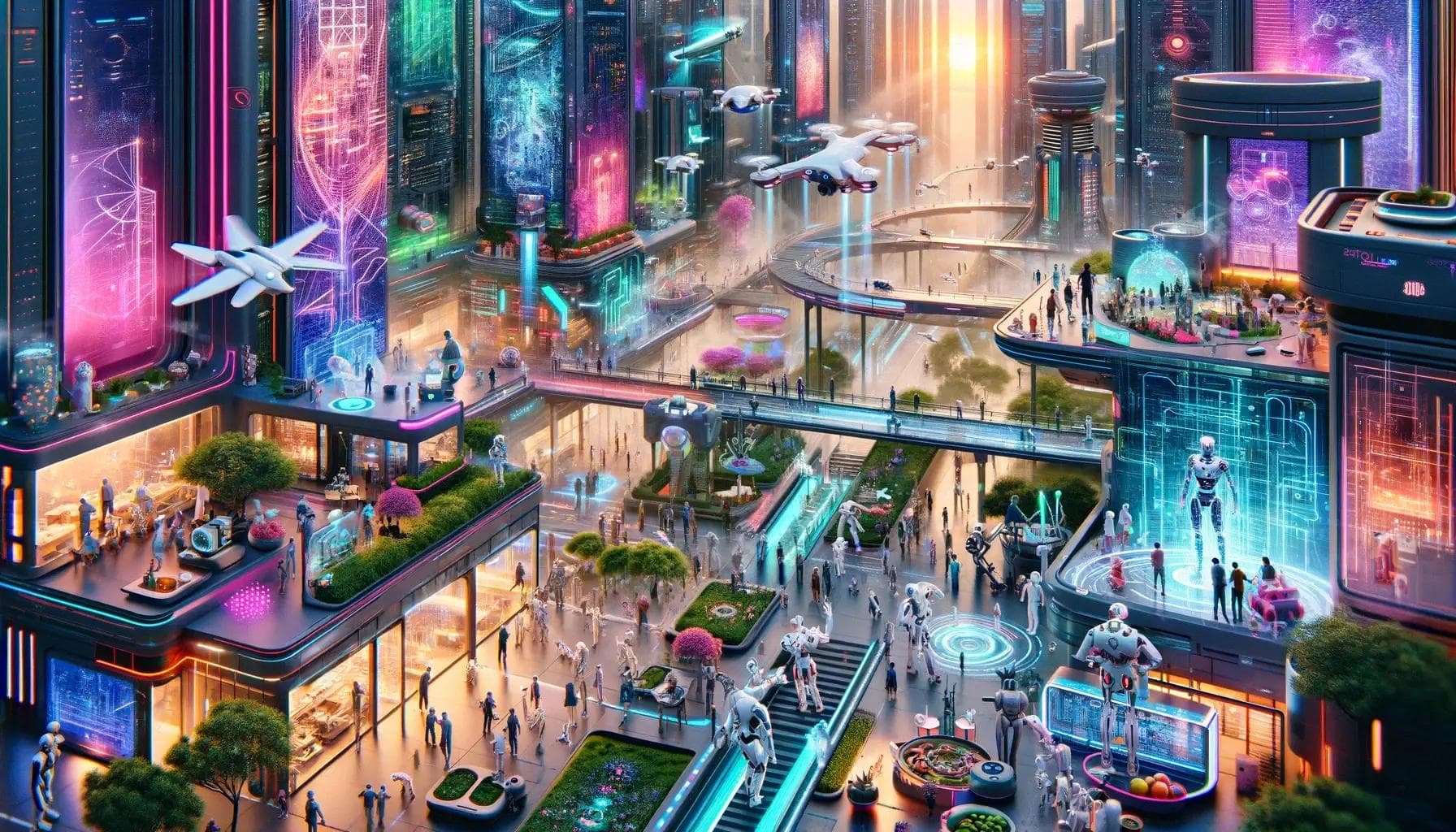Introduction
As we stand on the brink of a new era, the world of technology is not just evolving, it’s transforming. The future isn’t just about progress, it’s about reshaping our interaction with the world around us. As we gaze into the horizon towards 2030, the idea of digital reality platforms sparkles with promise. It whispers of a future where our everyday lives are redefined by immersive experiences. It’s not just a change, it’s a revolution, a leap into a world where the lines between the physical and the digital blur and we find ourselves living in a reality that’s more vibrant, more interactive, and more amazing than anything we’ve known before.
What is Digital Reality?
Digital reality is like stepping into a world crafted by imagination, where the boundaries between what’s digital and what’s real blur. It’s a magical mix of virtual worlds (VR), where you can dive into entirely new universes, augmented reality (AR), where digital wonders blend with our real surroundings, and mixed reality (MR), which merges the two in exciting ways. It’s like having a superpower to see and interact with a layer of the world that’s hidden to the naked eye, turning everyday moments into extraordinary experiences. This isn’t just technology; it’s a doorway to countless new adventures, stories, and experiences, right at our fingertips.
The Evolution of Digital Reality Platforms
The Role of AI in Shaping Immersive Experiences
AI is the cornerstone of modern digital reality platforms. It enhances the user experience by making it more personalized and interactive. AI algorithms can analyse user behaviour to customize environments in real-time, making digital interactions more intuitive and engaging.
Case Study: AI in Virtual Shopping
Imagine walking into a virtual store where AI instantly recognizes your style preferences based on your past purchases and browsing history. Interactive displays present a curated selection of products tailored just for you. This level of personalization, powered by AI, is transforming the retail industry.
The Impact of Digital Reality on Various Sectors
- Education
Digital reality in education offers interactive and immersive learning experiences. Students can take virtual field trips to historical sites or explore the human body in 3D, making learning more engaging and effective.
- Healthcare
In healthcare, digital reality assists in complex surgeries through 3D visualization and provides virtual training scenarios for medical professionals. It also offers therapeutic applications, such as VR for pain management.
- Entertainment
The entertainment industry has been revolutionized by digital reality. From VR gaming to AR in movies, these technologies provide deeply immersive experiences, blurring the lines between story and reality.
The Ethical Considerations
As we eagerly adopt these technologies, it is imperative that we carefully consider their ethical implications. From data privacy concerns to potential psychological effects, we must address these issues in order to ensure that these technologies have a positive impact on society.
The Future: 2030 and Beyond
As we look ahead to 2030, digital reality platforms are set to become an intrinsic part of our daily routines. With the merging of AI, IoT, and 5G technologies, we can anticipate a seamless and immersive digital landscape, blurring the lines between virtual and physical interactions.
Predictions for 2030
- Ubiquitous AR: Augmented reality will be a part of everyday life, with applications ranging from navigation to interactive advertising.
- VR in Workplaces: Virtual reality will be commonly used for remote work, providing a virtual space for collaboration and communication.
- Advanced MR Applications: Mixed reality will find more applications in industries like manufacturing and engineering for training and simulation.
Conclusion
The journey towards 2030 isn’t just about technological advancement. It’s about responsible innovation and ethical stewardship. It’s about ensuring that our digital future is inclusive, safe, and beneficial for everyone. It’s about making sure that as we push the boundaries of what’s possible, we don’t lose sight of what’s important — our shared values, our collective well-being, and our common future.



